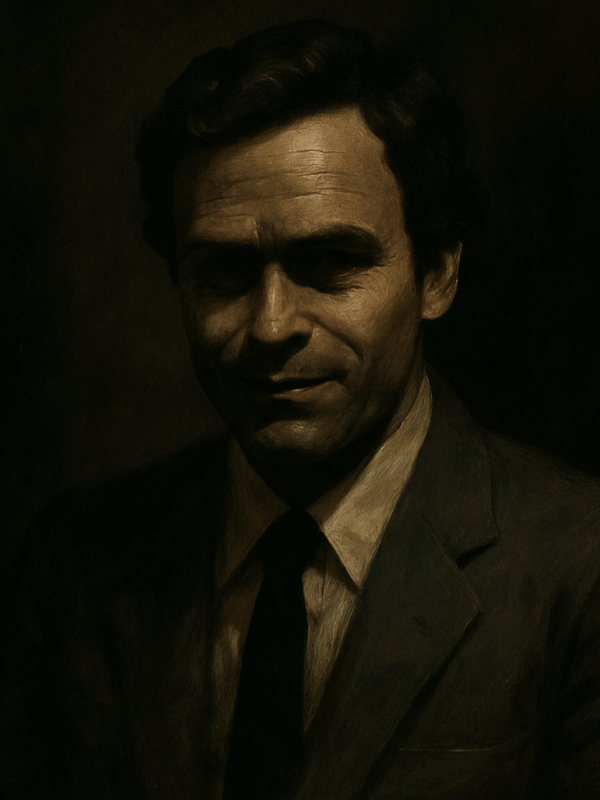In the summer and fall of 1974, a phantom moved across the American landscape, leaving a trail of terror that spanned from the beaches of Florida to the quiet woods of Connecticut. He was handsome, charismatic, and articulate, with a look that one journalist described as a cross between Robert Redford and Ryan O’Neal. But behind the disarming smile and easy charm was a cold-blooded psychopath, a predator who used his good looks as a lure. They called him the “Casanova Killer,” a man who could talk his way into your life one day and brutally end it the next. His name was Paul John Knowles, and for four frantic months, he became one of the most prolific and feared serial killers of his generation.
From Petty Criminal to Deadly Predator
Born in Orlando, Florida, in 1946, Paul John Knowles had a troubled upbringing that led to a predictable life of petty crime. By the age of 19, he was incarcerated, and he spent most of his young adult life in and out of prison for offenses like burglary, kidnapping a police officer, and assault. But while serving time at Florida State Prison, Knowles discovered a new tool for manipulation: his pen.
He began corresponding with Angela Covic, a San Francisco divorcee who found his name in an astrology magazine’s pen pal column. Knowles, a master of words, charmed her from thousands of miles away. He convinced her of his love and his desire for a new life. Covic was so smitten that she hired a lawyer who successfully secured Knowles’ parole in May 1974, on the condition that he move to San Francisco and marry her.
Covic flew to Florida to meet him, but the man she encountered was not the sensitive soul from the letters. He was controlling and volatile. The engagement was called off, and a spurned Knowles was left adrift. This rejection, many believe, was the trigger that unleashed the rage that had been simmering for years. After a brief stint back in jail for a bar fight in Jacksonville, Knowles picked the lock on his cell door on July 26, 1974, and walked out into the night, beginning one of the most savage and random killing sprees in U.S. history.
A Four-Month Reign of Terror
Knowles’ rampage was terrifying in its randomness. Unlike serial killers who stick to a specific victim type or geographic location, Knowles was an opportunist. He killed men, women, and children, rich and poor, across at least eight states. His motive was often simple convenience—the need for a car, cash, or just the thrill of the act itself.
- July 26, 1974: The night of his escape, Knowles broke into the Jacksonville home of 65-year-old Alice Curtis. He bound and gagged the retired teacher before ransacking her home and stealing her car. Curtis choked to death on the gag, becoming his first known victim.
- August 1974: In the following weeks, he murdered 13-year-old Ima Jean Sanders in Georgia and 49-year-old Marjorie Howie in Florida. He was a ghost, leaving few clues and moving on before law enforcement could connect the crimes.
- September 1974: His deadly road trip took him west. He murdered William Bates in Ohio, then drove his victim’s car to Nevada, where he killed two campers, Emmett and Lois Johnson. From there, he drifted to Texas, where he raped and strangled 42-year-old Charlynn Hicks.
- October 1974: Knowles made his way to the Northeast. In Marlborough, Connecticut, he broke into the home of Karen Wine, murdering both her and her 16-year-old daughter, Dawn.
- November 1974: His spree reached its frenzied and bloody climax in Georgia. In Milledgeville, he befriended and was invited into the home of Carswell Carr. He brutally stabbed Carr to death and then strangled his 15-year-old daughter, Amanda. The scene was one of utter carnage.
The Journalist and the Killer
Perhaps the most chilling chapter of Knowles’ story illustrates the power of his deadly charm. In Atlanta, shortly after murdering the Carrs, Knowles, now using an alias and driving his victim’s car, met Sandy Fawkes, a British journalist on assignment. Fawkes, completely unaware of the man’s true identity, was taken by his good looks and compelling stories. For three days, they traveled together, with Fawkes documenting their road trip, believing she had stumbled upon a fascinating character study. She became the woman who spent a weekend with a serial killer and lived to tell the tale.
The deadly spell was only broken after they parted ways. Knowles attempted to assault a friend of Fawkes, who escaped and alerted the police. The “Casanova Killer” was now a named and hunted man.
The Final Days and a Violent End
With his face now on the news, Knowles’ time was running out. He kidnapped Florida State Trooper Charles Eugene Campbell and a Delaware businessman named James Meyer, handcuffed them to a tree in a secluded wood, and shot them both in the head.
The massive manhunt finally cornered him on November 17, 1974. After crashing his car through a police roadblock in Henry County, Georgia, he fled into the woods. He was apprehended not by an army of police, but by a lone civilian, a Vietnam veteran named David Clark, who held him at gunpoint until authorities arrived.
In custody, Knowles was boastful and hungry for the fame he believed he deserved. He confessed to his lawyer, recording a series of audiotapes detailing at least 18 murders, though he claimed the true number was closer to 35. These tapes, a chilling diary of his crimes, were his final play for notoriety.
He would never face a jury. On December 18, 1974, while being transported by FBI agents, Knowles allegedly tried to grab an officer’s gun. An agent fired three shots, killing him instantly. The Casanova Killer, who had lived by violence, died by it, leaving behind a legacy of unanswered questions and dozens of shattered families across the country. His death silenced the man but not the horror of his deeds, a grim reminder that true evil can often wear a handsome and charming disguise.
Want to explore the shadows even deeper? For more chilling cases like this, visit SinisterArchive.com, where the legends are real.




